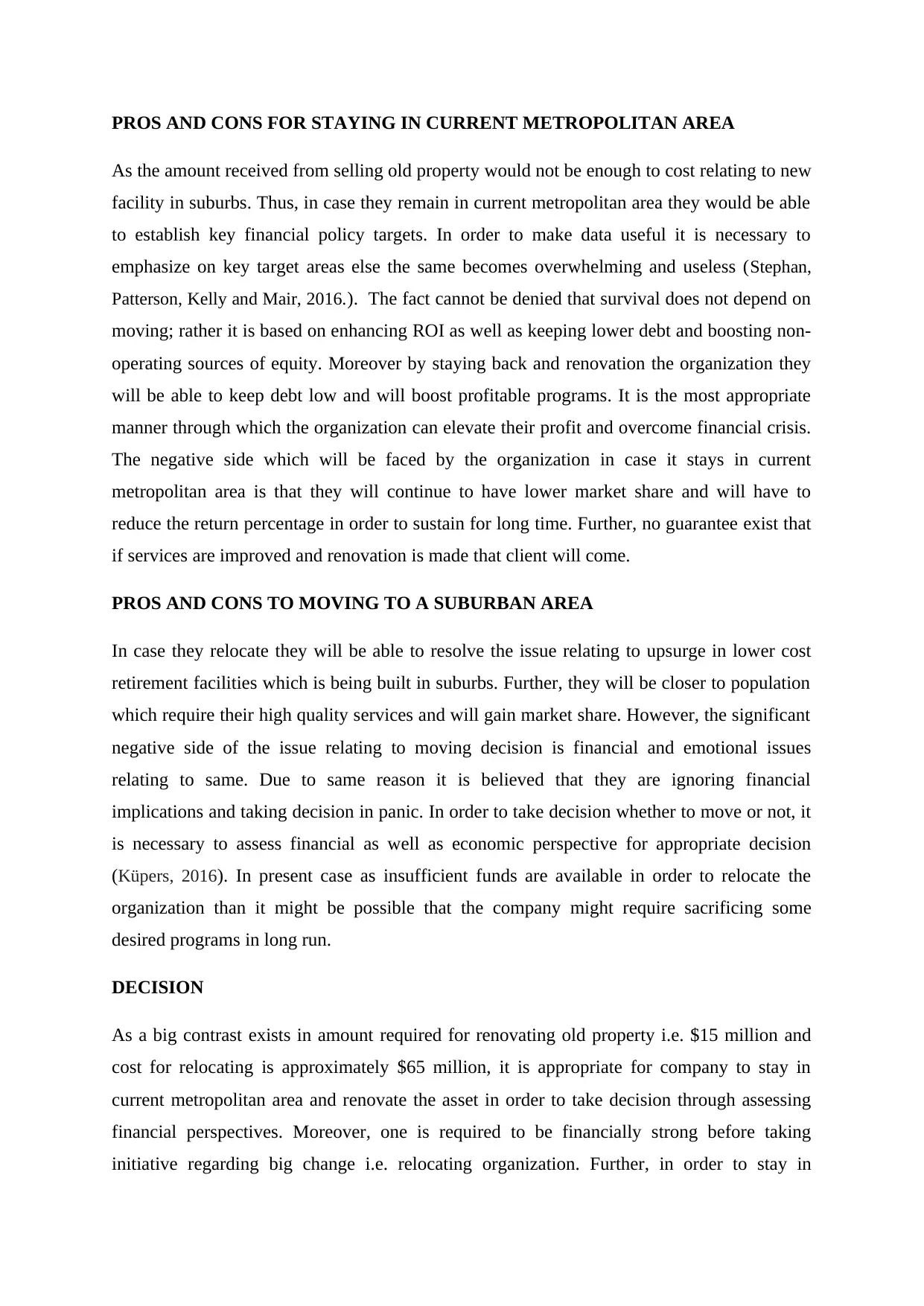Strategic Analysis: Evaluating Relocation for Business Growth
VerifiedAdded on 2023/04/21
|4
|556
|384
Case Study
AI Summary
This case study explores the financial and strategic considerations for a business deciding whether to stay in its current metropolitan area and renovate its existing facilities or relocate to a suburban area. The analysis weighs the pros and cons of each option, considering factors such as the cost of renovation versus relocation, market share, return on investment (ROI), debt management, and the potential impact on profitable programs. The study suggests that staying in the current location and renovating is the more financially prudent decision, given the significant cost difference between the two options and the importance of maintaining financial stability before undertaking major changes. It emphasizes the need for regular financial planning and adaptation to market changes to remain competitive.
1 out of 4




![[object Object]](/_next/static/media/star-bottom.7253800d.svg)